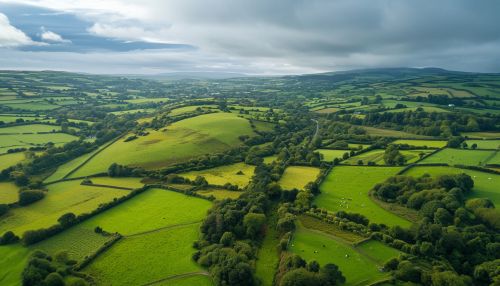Plantation of Munster
History
The Plantation of Munster was a significant event in the history of Ireland, taking place in the late 16th and early 17th centuries. The plantation was part of the wider Plantations of Ireland, a series of colonizations by the English and Scottish. The aim was to pacify and Anglicize Ireland, and the plantation of Munster was a key part of this strategy.


The plantation of Munster followed the Desmond Rebellions, which had devastated the province. The rebellions were a series of uprisings against English rule, led by the Earls of Desmond. The rebellions resulted in the forfeiture of vast amounts of land, which was then granted to English settlers.
The Plantation
The plantation of Munster was a complex and multifaceted process. It involved the confiscation of land from the native Irish, the settlement of English and Scottish colonists, and the imposition of English laws and customs. The plantation was not just a physical act of settlement, but also a cultural and political project.
The plantation was carried out in stages. The first stage involved the surveying of the land and the drawing up of a plan for settlement. This was followed by the granting of land to settlers, who were required to build houses and fortifications, and to bring in English tenants. The settlers were also required to adhere to English laws and customs, and to promote the Protestant Reformation.
The plantation was overseen by the English Crown and implemented by the Lord Deputy of Ireland. However, it was not a straightforward process. There was resistance from the native Irish, and there were also conflicts among the settlers themselves. Despite these challenges, the plantation of Munster was largely successful in achieving its aims.
Impact
The impact of the plantation of Munster was profound and long-lasting. It resulted in significant demographic, cultural, and political changes. The plantation led to the Anglicization of Munster, with English becoming the dominant language and culture. It also resulted in the displacement of the native Irish, who were pushed to the margins of society.
The plantation also had a significant impact on the landscape of Munster. The settlers built new towns and villages, and they introduced new farming practices. These changes transformed the physical landscape of Munster, and they also had a profound impact on the social and economic structure of the province.
The plantation of Munster also had wider implications for Ireland as a whole. It was a key part of the English Crown's strategy to pacify and Anglicize Ireland. The plantation set a precedent for future plantations, and it was a key factor in the emergence of the Protestant Ascendancy.
Legacy
The legacy of the plantation of Munster is still evident today. The plantation has left a deep imprint on the landscape, culture, and society of Munster. The towns and villages established by the settlers are still in existence, and the English language and culture remain dominant.
The plantation has also left a legacy of division and conflict. The displacement of the native Irish and the imposition of English rule have been sources of tension and conflict for centuries. The plantation of Munster is a key part of the historical background to the Irish Question, and it continues to influence the politics and society of Ireland today.
